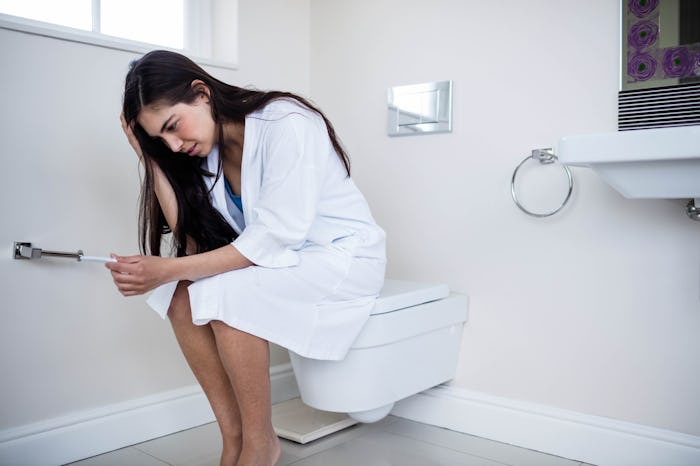Life

False-NegativePregnancy Tests Are Possible & Here Are 5 Reasons Why
You may have heard a tale or two of a woman who didn’t know she was pregnant until she was going to bathroom and saw a head coming out of her hoo-ha. Although this scenario is a bit extreme, it is possible for women to be unaware of a pregnancy. Some of these women may have seen a false-negative on a pregnancy test and taken that result as a finality. Yes, it is possible to get a false-negative reading. In fact, according to Mayo Clinic, more women are likely to have a false-negative reading than a false-positive. Which means it is possible that an at home test is telling you you’re not pregnant when you really are.
Pharmacy shelves stock plenty of options for home pregnancy tests, but it’s important to remember that all pregnancy tests have one job: search for human chorionic gonadotropin. Better known as hCG, this is the hormone a woman’s body produces when she becomes pregnant. Levels of hCG can be found in blood and urine tests between 11 and 14 days after conception takes place. According to the American Pregnancy Association, hCG levels double every 72 hours on average, reaching a peak in the first 8 to 11 weeks of pregnancy. A test will show a negative or positive result based on how low or high the levels of hCG register.
So what does this have to do with false-negatives? Well, most of the time a false-negative happens when something interferes with the test detecting hCG. Understanding what can cause bogus results will keep you on track to more accurate readings. Here are some factors to consider if you believe you have received a false-negative result.
1Your Urine Is Diluted
As you drink throughout the day, your urine becomes more diluted, making it hard for the test to register how much hCG your body is producing. For the most accurate results, take a pregnancy test right after you hop out of bed and before you have anything to drink.
2You Didn’t Give The Test Enough Time
We all want results right away, but pregnancy tests need time to locate enough hCG to get a positive reading. Instead of hovering over the test, try walking away and waiting for the amount of time suggested on the test’s instructions. This can help eliminate a false-negative from checking results too soon.
3You Tested Too Soon
One of the most tried and true signs of pregnancy is a missed period. But, as Mayo Clinic notes, it takes a few days for hCG levels to rise high enough to be detectable in your urine, which is why it is best to wait one week after a missed period to take an at home test. If you have other symptoms of pregnancy and do not want to wait that long, you can always contact your doctor and ask for a blood test, which can read hCG levels sooner than a urine test.
4You Only Took One Test
Just because the first pregnancy test was negative, doesn’t mean the second or third one will have the same result. Every woman is different, and the rate at which hCG levels rise in the body can vary. If the first test you take is negative, but you still believe you may be pregnant, retest yourself two to three days later, when hCG levels have had the chance to increase.
5The Test Was Expired
Yes, even home pregnancy tests have an expiration date, so make sure to check the date on the box before you purchase your test. Using a test that has expired may cause inaccurate readings.
Typically, at home pregnancy tests are 97 percent accurate, leaving only a small margin of error. However, we are only human and mistakes can happen (which is why many home test kits come with more than one test.) So do yourself a favor and schedule an appointment with your healthcare provide if you have any reason to suspect that you may be pregnant. Even if your missing period comes back, it doesn’t hurt to be sure.